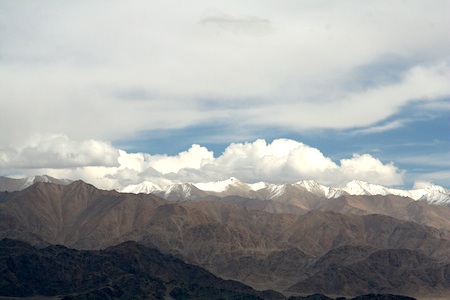History
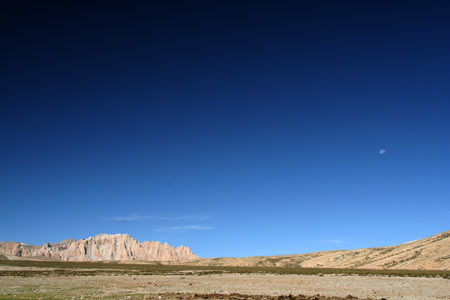
The tibetan plateau has been inhabited since the paleolithic age. Later, neolithic societies flourished, especially in the southern regions, where megaliths erected at that time can be found.
From the iron age, Tibet saw the emergence of various kingdoms such as Shang Shung in the west or Yarlung in the south, while other populations remained organized in small clanic communities.
From empire to buddhism
In the 7th and 8th century, the small kingdom of Yarlung expanded to a large empire covering most of central Asia. The military conquest of Songtsen Gampo and the following emperors brought the whole tibetan cultural space under the sovereignty the Yarlung dynasty, as well as Nepal, Burma, Kashmir, the north of India down to the Ganges, vital parts of the silk roads in the Tarim desert and a vast portion of China, Tibetans going as far as occupying its capital, Chang'an, and chasing the chinese emperor away. At that time, Tibet was one of the most powerful nations of Asia, respected by its neighbours the Mongols, the Turks, the Chinese, the Indians and the Arabs.
In 842, after the murder of the emperor, the empire started to dislocate due to internal conflicts. The next 400 years saw the spread of an indian religion, buddhism, which had had some influence among the aristocracy during the empire, and was now going to become the main religion of the whole tibetan population.
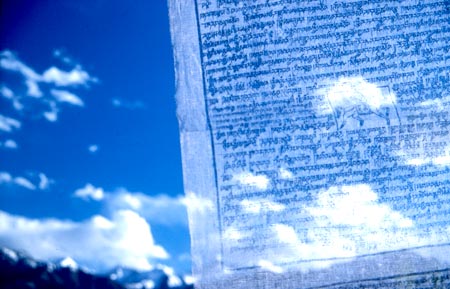
The Mongols
In 1206, Genghis Khan became the supreme leader of the Mongols, and launched an extraordinary expansion of the mongol empire throughout the eurasian continent.
After its invasion in 1240, Tibet was going to be a mongol protectorate for most of the next 500 years.
In the 16th century, a mongol king created the institution of the Dalai Lama, giving religious and temporal authority over the province of U (Central Tibet) to a monk of the gelugpa sect.
In the 17th century, after crushing resistance in the provinces of Kham and Tsang, the Mongols installed the 5th Dalai Lama and extended his temporal power to Kham, Amdo, Ngari and Tsang. That is most of the territories inhabited by tibetan populations. Opposition movements were crushed by the new Dalai Lama, who also engaged conflicts with independant tibetan countries in Ladakh, Nepal and Bhutan.
On the long run, the 5th Dalai Lama, with his balanced use of strength and diplomacy, managed to gather the various religious and political groups under his authority and Tibet became a strong unified state.
The Manchus
After his death, this unified state dislocated and most of the provinces regained their independance.
From the 18th century, the Manchus, a people of North-East Asia who had recently conquered China, gradually took control over the Tibetan cultural area. They installed a new Dalai Lama in 1720, established a tibetan government of their own and set a garnison in Lhassa.
The Manchus also incorporated the provinces of Kham and Amdo into their empire. However, these areas remained governed by their local leaders (chiefs, kings and monasteries), under the distant sovereignty of Beijing.
Several manchu high-officials called Ambans were sent to Tibet to control the military affairs and have an eye on the tibetan government in Lhassa. Several times, the Manchus had to send their army to the "land of snow" in order to repell foreign agression, Tibet being unable to defend itself.
But in the 19th century, the manchu empire declined and failed to take care of its protectorate. The Ambans were left to a purely symbolic role and the tibetan government was fully in charge of the country, that is Ngari, U and Tsang regions (Kham and Amdo were still manchu provinces).
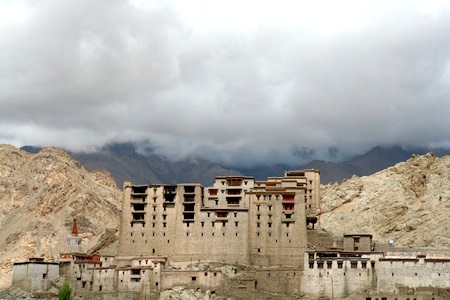
The Chinese
When the nationalist Chinese terminated the manchu empire in 1911 and transformed it into the Republic of China, Tibetans expelled the emperor's troops from Lhassa, and the 13th Dalai Lama declared the independance of Tibet.
Kham and Amdo remained governed by Beijing, and the new leaders of China continued the implementation of chinese administration, garnisons and schools as well as the population transfer policy initiated by the empire.
Meanwhile, in the independant half of Tibet, the 13th Dalai Lama was initiating a vast modernization program (setting up of western schools and a police force, installation of an electricity network and a telegraphic line, expansion of the army) which had to be abandonned due to the opposition of the clergy.
In 1949, the chinese communists overthrew the nationalist government and on october 1st, Mao Zedong declared the formation of the People's Republic of China. He stated that Tibet was a chinese province and would soon be "liberated from foreign imperialism".
After a short military agression on the tibetan border in october 1950, the Chinese proposed a 17-point agreement integrating Tibet into China with a status of autonomy. The United Nations refused to get involved but the United States offered their support to Tibet against the Chinese (at that time, the sino-american war was raging in Korea) while the buddhist clergy favoured collaboration with the invader. Eventually the monks won over the young Dalai Lama and on October 1951, the still 16 year old boy ratified the agreement officially integrating independant Tibet into China .
Until 1959, very little changed in this part of Tibet, the collaboration between the Dalai Lama's government and the communist authority being rather peaceful.
Kham and Amdo, however, continued to be under direct chinese authority, and were not covered by the 17-point agreement. Like the rest of China, they experienced the radical socio-economic restructuration undertaken by the communist government. The "democratic reforms" suppressed the traditional culture of the rural population and implemented the collectivisation of agriculture, which culminated during the Great Leap Forward initiated in 1958. The entire rural population of China lived in state farms run by the communist cadres based onMao's whimsical theories. As a result, some 40 million people died of hunger between 1958 and 1961. Countless revolts occured in Kham. Thousands of khampas escaped to autonomous Tibet and stationned as refugees around Lhassa. A guerilla mouvement was created, soon to be armed and trained by the CIA.
Under the 17-point agreement, autonomous Tibet had remained quiet and prosperous, but in march 1959, due to a rumor that the chinese were planning to kidnap the Dalai Lama, thousands of tibetans demonstrated in Lhassa, to protest against the tibetan elite, accused of selling the country to the Chinese, and against the Chinese themselves. The revolt lasted for nearly two weeks and ended with a violent military retaliation and the escape of the Dalai Lama, who establihed an exiled government in India.
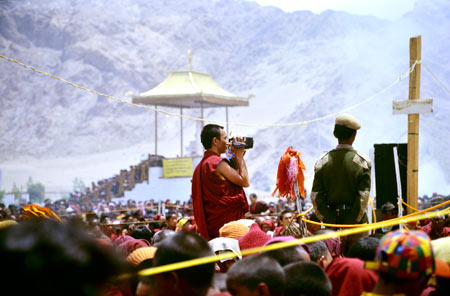
Collectivisation and cultural repression were applied to the formerly autonomous Tibet. The sixties and seventies were dreadful decades for the whole of China, especially after Mao had launched the Cultural Revolution. Things changed after his death, when Deng Xiaoping terminated communism in China in 1979. It was a huge relief for Tibetans, many of whom soon returned to their pre-communist lifestyle, without the feudal system. However, the totalitarian control of the population inherited from the communist regime was maintained.
Though Tibet has been for most of the past eight centuries in the political dependance of its neighbours, this was hardly felt by the population : tibetans have always organized their own life-style on the Roof of the World in accordance with their cultural values and and beliefs. What is happening nowadays is very different : Tibet has been invaded, colonized and absorbed by China. This unprecedented situation has a generated a very strong yearning for independance among tibetans in Tibet and in exile, backed by an important popular support throughout the world.
